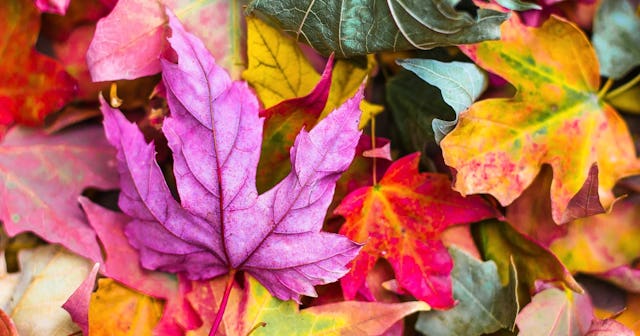Photosynthesize Some Fun With These 10 Leaf Coloring Pages

What is it about autumn that feels so comforting and cozy? From the crisp air to the arrival of sweater weather, the season is like a big warm hug. Of course, one of the best parts is witnessing the tree leaves turn from green to bright colors of red, yellow, and orange. Watching the fall colors change and immersing yourself in their beauty makes for an enjoyable fall activity. No doubt there are fond memories you have with your little ones that include jumping in the fall leaves, going on a leaf hunt, sketching leaves, and so much more. If your child can’t get enough of nature and the fall season — and who can blame them — then they’ll love our collection of free leaf coloring pages. They’re so lovely that you’ve got to see them to be-leaf them.
These free printables offer a great way to promote more of your kid’s artistic side. And, as a bonus, we’ve also included some interesting facts to teach your children more about leaves! For example, did you know that leaves require sunlight, water, chlorophyll, and carbon dioxide to make food for themselves?
So, what’s the hold-up? Get going on these unbe-leaf-able free leaf coloring pages. And afterward, you can enjoy more of our nature-themed free activities, including our vegetable coloring pages, mountain coloring pages, jungle coloring pages, beach coloring pages, and forest coloring pages. In the meantime, we will leaf you to it!
Free Printable Leaf Coloring Pages
Leaf Page No. 1
A leaf is an appendage on the stem of a vascular plant, which are plants characterized by the presence of conducting tissue that helps pass through water and minerals. As you may have guessed, leaves are the primary site of photosynthesis in plants. And speaking of tiny but hardworking leaves, did you know aquatic common duckweed plant leaves have the smallest leaves in the plant species? They’re about 0.04 to 0.4 inches.
Leaf Page No. 2
Lack of light is responsible for autumn’s changing colors. As the days grow shorter, the reduced light starts chemical changes in deciduous plants, which ultimately turns their color and leads to them, well, leaving the tree when winter comes.
Leaf Page No. 3
Most plant species in the plant kingdom have green leaves. The green color comes from chlorophyll, a green pigment found in chloroplasts.
Leaf Page No. 4
The Japanese red maple has red leaves all year round because, while they do contain chlorophyll, they contain higher levels of the red pigment anthocyanin.
Leaf Page No. 5
Leaves help us to breathe! How? Leaves need carbon dioxide to survive, which humans and animals breathe out. Upon absorbing this carbon dioxide from the air, they return oxygen, which we need to breathe in. This process is called respiration. But we aren’t the only mammals who need leaves in our lives. Did you know bamboo leaves are about 99% of a panda’s diet? They eat about 83 pounds of leaves a day!
Leaf Page No. 6
The leaves of houseplants are similar to the leaves on trees outdoors. If your houseplant is dropping leaves, it’s typically a regular part of its life cycle. For example, as the days get darker, your plants might drop leaves just like they would outside (or it could be that you’re not a good houseplant parent, kidding!).
Leaf Page No. 7
A leaf consists of three layers: epidermis (the outer layer), mesophyll (the interior of the leaf between the upper and lower epidermis), and veins (the blackish lines visible in the leaves, which helps keep their shapes and keeps substances moving through the leaf).
Leaf Page No. 8
In the spring months, plants and trees start to bud and grow new green leaves in preparation for the summer months. Dormant leaves burst out of buds from the winter, triggered by the appearance of sunlight. Such fresh green foliage looks like a tasty snack for animals and insects that primarily eat leaves. These creatures, which include caterpillars and koalas, are called folivores.
Leaf Page No. 9
Fallen leaves account for 75 percent of our solid waste in the fall — that’s a lot of leaves. You can also reduce the waste by using leaves in some fun fall activities with your kids.
Leaf Page No. 10
In the winter months, plants and trees will be bare and have no leaves with the exception of evergreens that contain leaves all year round.
Click here to print all of the leaf coloring pages at once!
This article was originally published on